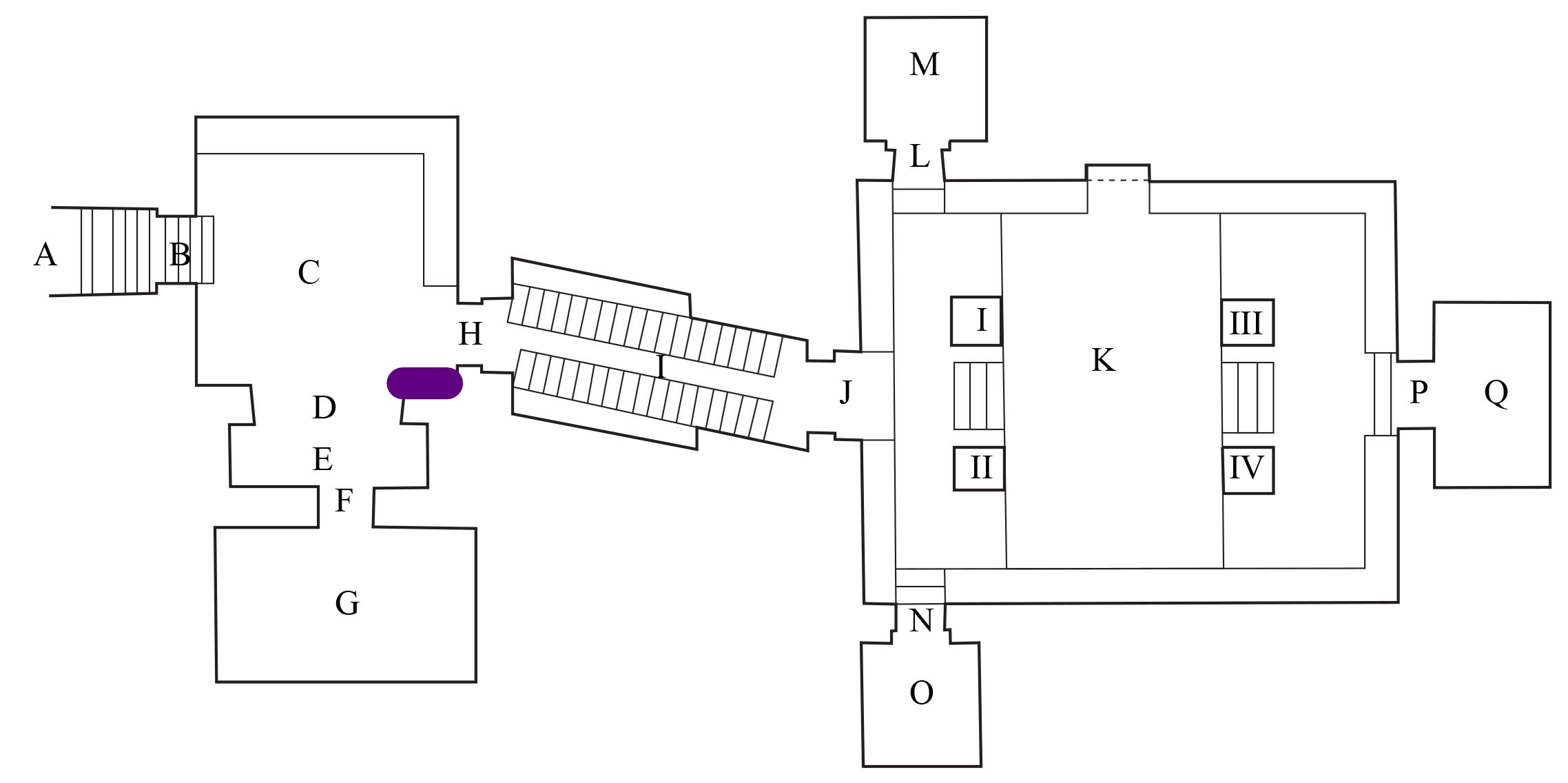|
Osiris
Depicted as a mummy, wearing the atef-crown, Osiris stands in a golden shrine, holding a crook and flail. On either side of him are two stuffed, headless leopard skins tied on poles,
planted in stands resembling flowerpots. These are imuit fetishes, usually associated with the god Anubis.
The titles of Osiris above his head
Wsir xnty imnt.t Wnn-nfr nsw.t anx(.w) nTr aA HqA PsD.t nb r nHH HqA D.t Hr-ib ta Dsr
Osiris, foremost of the West, Wennefer, king of the living, the great god, who rules the Ennead, lord of nHH-eternity, ruler of D.t-eternity in the sacred land.
The column written in front of Osiris
di.n=(i) n=(T) nHH mi it(=i) Ra
I have given to you nHH-eternity like your father, Re‘.
Behind Osiris
sA anx Dd wAs HA=s mi ra D.t
Protection, Life, Stability, Dominion are behind her Like Re for D.t-eternity
Eternity
In these passages, the two complementary aspects of eternity appear, linear (D.t) and cyclical (nHH).
According to Barbara Richter:
“The concept of nHH is equated with Ra and the morning sun; D.t, with Osiris and the evening sun.
In fact, there is such a strong identification between the two gods with these aspects of time, that
the ideogram for Ra can represent nHH, and the ideogram for Osiris, D.t. Assmann clarifies
these eternal aspects of duration and change, which play such an important part in the Egyptian
concept of time. He notes that in contrast to humans, the gods exist outside earthly temporality,
but are nevertheless subject to change; rather than being ‘always in existence,’ they are "always
becoming." The gods thus live, age, die, and are reborn, in a constant, eternal metamorphosis.
This cyclical aspect of divine existence also contains within it the idea of the reversibility of
time—an aspect contrasting quite dramatically with human time, whose "irreversible" phases
lead inexorably towards a single, finite goal” (Barbara Richter, The Theology of Hathor of Dendera: Aural and Visual Scribal Techniques in the Per-Wer Sanctuary (Lockwood Press, 2016), 154).
|







